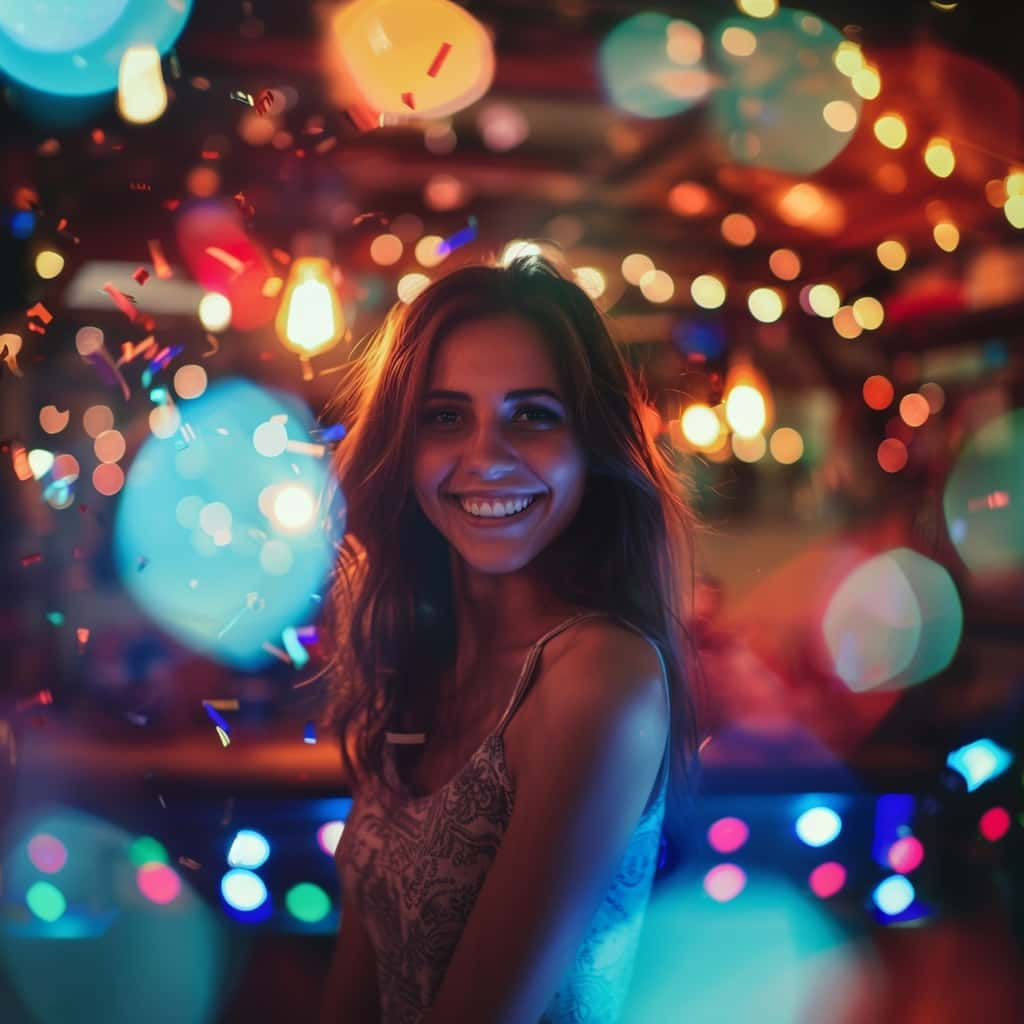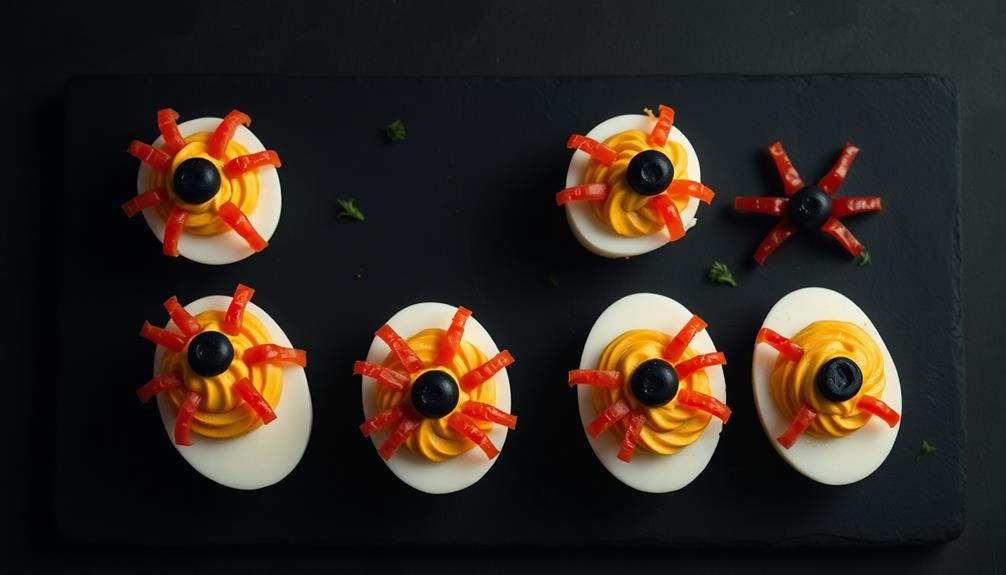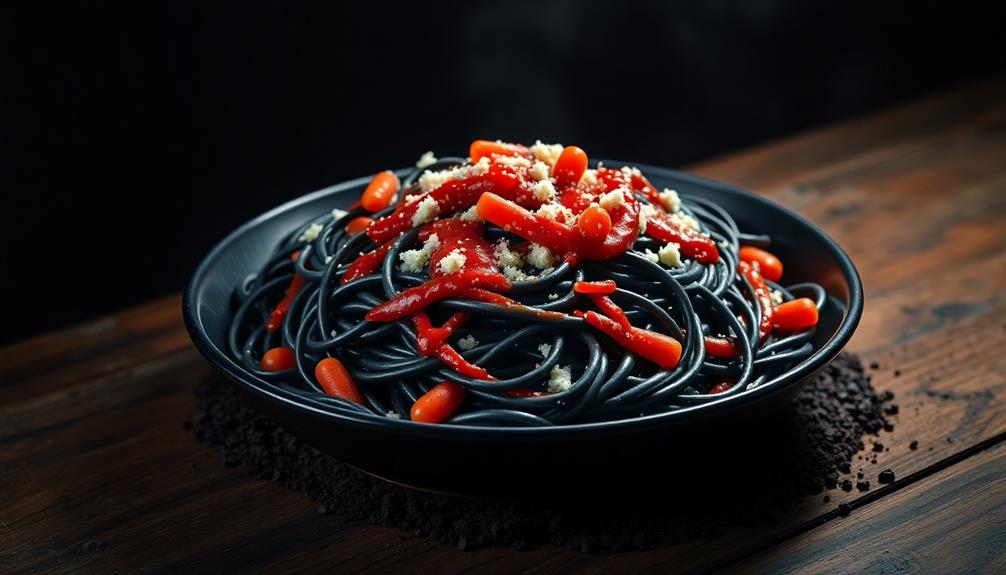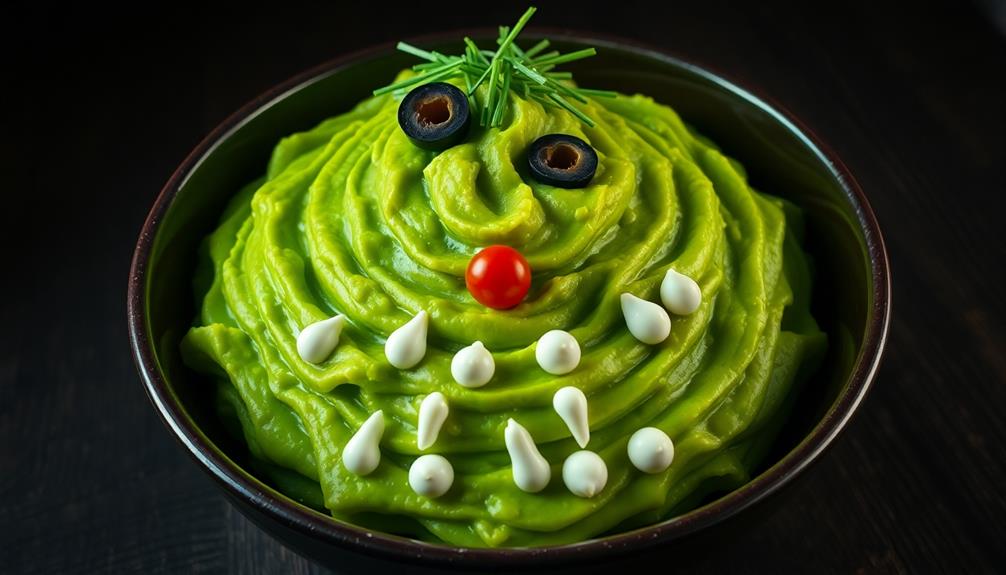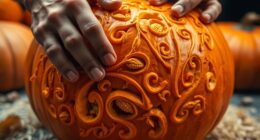To build a compelling character through costumes, use color theory to convey personality and mood. Start with the color wheel to choose harmonious or contrasting hues that reflect traits—like blue for trust or red for passion. Consider color symbolism and psychological effects to deepen character expression. Balancing bold or subtle shades helps create visual impact, enhancing storytelling. Exploring these principles will give you powerful tools to craft authentic, emotionally resonant costumes—so continue exploring these ideas for more insights.
Key Takeaways
- Use the color wheel to select harmonious palettes that reflect the character’s personality and emotional traits.
- Choose colors that symbolize key traits, such as blue for trustworthiness or red for passion, to deepen character portrayal.
- Apply contrasting or complementary colors to highlight character roles and create visual interest in costume design.
- Consider cultural and symbolic meanings of colors to add depth and context to the character’s story.
- Balance color schemes to ensure costumes are visually striking yet cohesive, supporting storytelling and character development.
Understanding the Color Wheel and Color Relationships

Understanding the color wheel and color relationships is essential for creating visually compelling costumes. When you grasp how colors interact, you can craft designs that stand out or blend seamlessly. Complementary colors, which sit opposite each other on the wheel, create striking contrast and visual energy, perfect for making certain costume elements pop. Using these colors thoughtfully enhances your overall color harmony, ensuring your costume looks balanced and intentional. Recognizing how different hues relate helps you avoid clashing or dull combinations, allowing you to select color schemes that support your character’s personality or theme. Mastering the color wheel gives you the tools to experiment confidently, creating costumes that are both eye-catching and cohesive. It’s the foundation for transforming your creative vision into reality. Additionally, understanding color harmony can help you design costumes that evoke specific moods or emotions, enhancing your storytelling.
The Psychology of Color and Character Traits
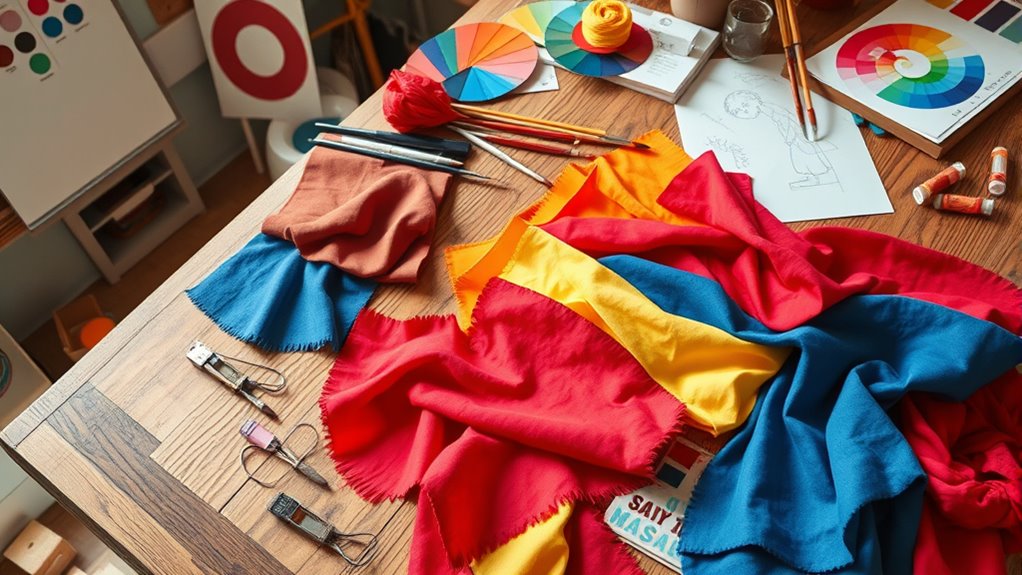
Colors do more than just enhance a costume’s appearance; they evoke specific emotions and convey personality traits that can deepen your character’s portrayal. Understanding color symbolism helps you select hues that align with your character’s traits, whether it’s trustworthiness with blue or passion with red. Emotional associations tied to colors influence how audiences perceive your character instantly. For example, warm tones like yellow suggest optimism and friendliness, while dark shades like black imply mystery or sophistication. By consciously choosing colors based on their psychological impact, you communicate non-verbal cues about your character’s personality. Additionally, awareness of personality traits like introversion or extroversion can guide your color choices to better reflect your character’s inner world. This strategic use of color creates a more compelling and authentic portrayal, allowing viewers to connect emotionally even before any dialogue or action.
Utilizing Color Schemes to Convey Mood and Narrative

Choosing the right color schemes can powerfully shape how your costume communicates mood and advances your narrative. Understanding color symbolism helps you select hues that evoke specific emotions or themes—like red for passion or danger, or blue for calm and trust. Cultural color meanings add depth, as colors can have different connotations across cultures; for example, white symbolizes purity in some societies but mourning in others. By thoughtfully combining colors, you reinforce your character’s story and emotional landscape. A warm palette might suggest intimacy or aggression, while cool tones evoke distance or serenity. Use color schemes deliberately to guide your audience’s perception, ensuring your costume’s visual language aligns seamlessly with your character’s mood and narrative arc. Additionally, considering the health benefits of certain colors, such as green’s association with harmony and healing, can inform your palette choices to subtly communicate wellness or balance.
Balancing Color Composition for Visual Impact

Achieving a striking costume design depends on how well you balance color composition to create visual impact. Using complementary contrasts is a powerful way to draw attention; pairing colors opposite each other on the color wheel makes elements pop. However, you should also consider monochromatic harmony, where varying shades of a single hue create a cohesive, sophisticated look. Balancing these approaches involves carefully evaluating the overall effect you want to achieve—whether vibrant and energetic or subtle and unified. Too much contrast can overwhelm, while too little can lack interest. By thoughtfully combining complementary contrasts with monochromatic harmony, you ensure your costume captures attention without feeling chaotic, resulting in a compelling and visually balanced character presentation. Incorporating color coordination can further enhance the overall aesthetic and ensure the costume design remains harmonious.
Practical Tips for Applying Color Theory to Costume Design
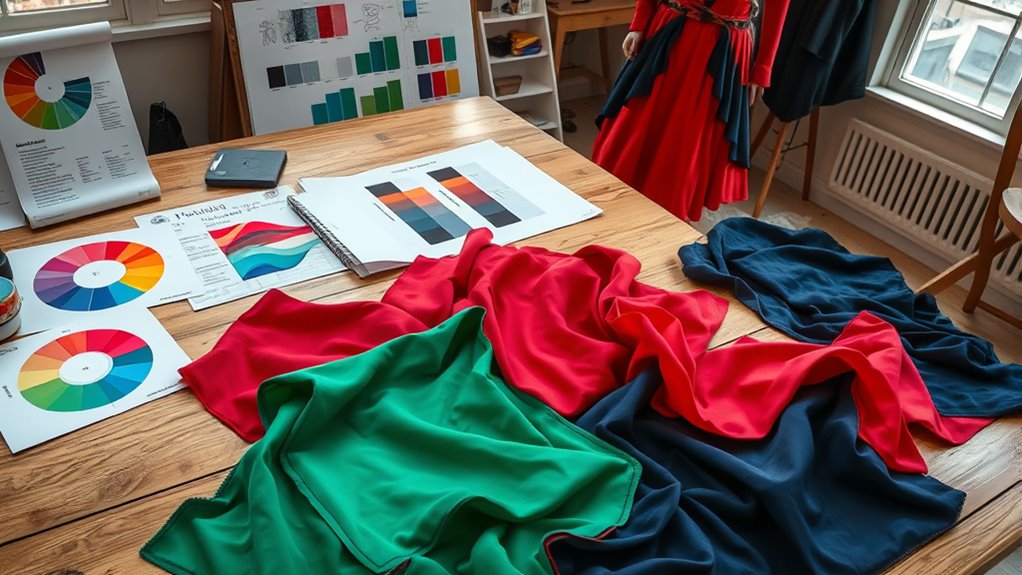
To effectively apply color theory in costume design, start by identifying the mood and character traits you want to convey, then select a color palette that supports these qualities. Focus on creating color harmony by choosing colors that complement or contrast intentionally. Remember that costume symbolism enhances storytelling; colors can represent emotions, status, or themes. Use the table below to guide your decisions: | Color Scheme | Purpose | |——————–|——————————————| | Complementary | Creates vibrant contrast, highlights key features | | Analogous | Maintains harmony, suggests unity | | Triadic | Adds dynamic interest, balances warmth and coolness | Incorporating an understanding of color psychology can further refine your choices to evoke specific emotional responses.
Frequently Asked Questions
How Do Cultural Differences Influence Color Perception in Costumes?
You should consider that cultural symbolism and regional palettes greatly influence how colors are perceived in costumes. Different cultures associate specific colors with particular meanings, like red symbolizing luck in China or mourning in Western cultures. By understanding these cultural differences, you can choose colors that resonate appropriately, ensuring your costume respects regional palettes and effectively communicates your character’s identity and background through meaningful color choices.
What Are Common Mistakes to Avoid When Choosing Costume Colors?
Think of choosing costume colors like painting a picture—avoid color clash and overusing neon, which can overwhelm your design. Don’t rely solely on bright hues; they might make your costume look gaudy or unbalanced. Instead, balance bold colors with neutrals. Steer clear of mismatched shades that clash and distract from your character’s story. Thoughtful color choices underscore your costume’s purpose and ensure it captures the right impression.
How Can Color Theory Be Adapted for Different Historical Periods?
You can adapt color theory for different historical periods by researching authentic historical color palettes and understanding period-specific symbolism. Use colors that reflect the era’s available dyes and cultural meanings, ensuring your costume aligns with the time’s aesthetic and social cues. Incorporate muted tones for Victorian or Renaissance periods, while vibrant colors work for the Roaring Twenties, making your costume both accurate and visually compelling.
What Tools or Software Can Assist in Color Planning for Costumes?
Think of digital palettes and color matching software as your costume’s compass in a sea of shades. Tools like Adobe Color, Coolors, and Pantone Studio help you select harmonious colors effortlessly. I once used these to match a vintage fabric’s hue perfectly, saving hours of trial and error. They streamline your process, ensuring your costume colors stay true to your vision and make your character pop with vibrant authenticity.
How Does Lighting Affect the Appearance of Costume Colors on Stage or Screen?
Lighting angles and color saturation markedly impact how your costume appears on stage or screen. When lighting hits from different angles, it can enhance or wash out colors, altering their vibrancy. High color saturation makes costumes pop, but soft or angled lighting can mute these tones, reducing their impact. To achieve your desired look, consider how lighting choices will interact with your costume’s colors, ensuring they convey the intended mood and character.
Conclusion
Remember, a picture is worth a thousand words, and the same goes for your costumes. By mastering the color wheel, understanding color psychology, and balancing your palette, you can craft characters that speak volumes without a single line of dialogue. Trust your instincts and experiment boldly—your costumes are your storytelling tools. As the saying goes, “A good dress can change your life,” so use color wisely to bring your characters to vivid, unforgettable life.


